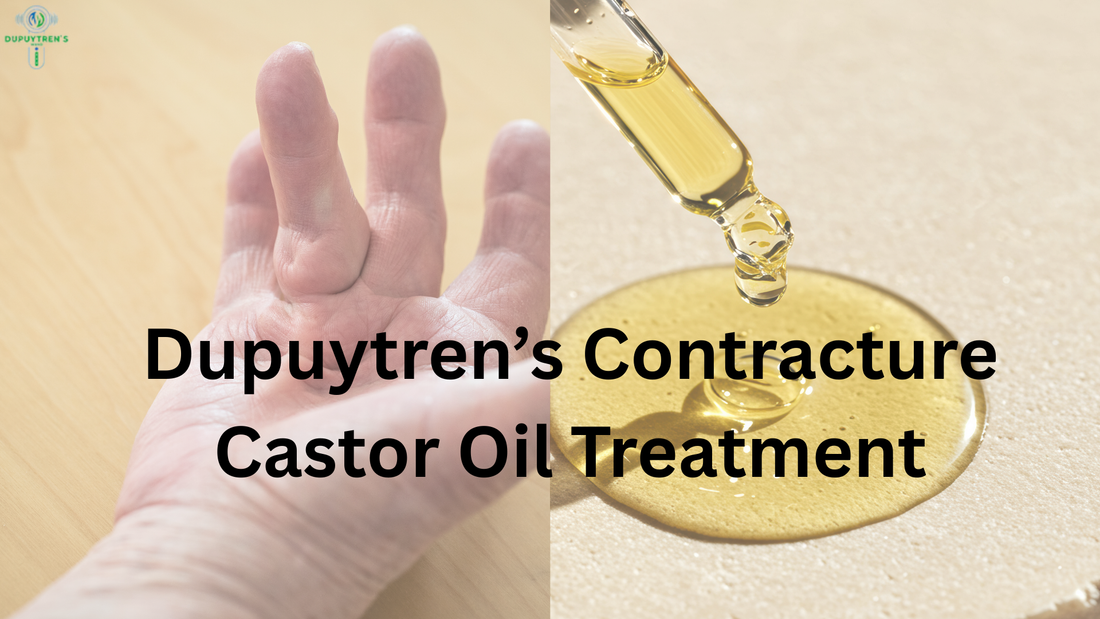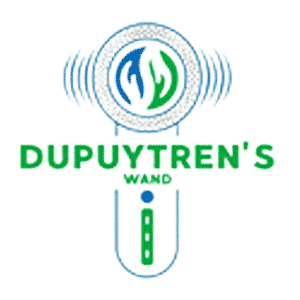
Dupuytren's Contracture Castor Oil Treatment: Breaking Free from Viking Hand Disease with Natural Solutions
Share
One morning, you wake up and notice that your fingers cannot straighten. What begins as a little and almost unnoticeable bump in your palm slowly begins to stretch into a rope-like tether that tugs your digits in an unending curve. This is not the story of a medieval curse--this is what happens to millions of individuals with Dupuytrens contracture, a condition so historically exclusive to the peoples of Northern Europe that it has gained the ominous reputation of Viking hand disease.
Dupuytren's contracture affects approximately 5% of the population, with rates climbing significantly among those of Scandinavian, Celtic, and Northern European descent. The condition, also known as viking hand disease, involves the thickening and tightening of fascia, the connective tissue beneath the skin of the palm and fingers. When this tissue contracts, it creates nodules and cords that slowly drag the fingers towards the palm, making simple things such as shaking hands, putting on gloves, or even washing your face more complicated. While traditional treatments have focused primarily on surgical intervention, many patients are now exploring alternative approaches, including natural remedies like dupuytren's contracture castor oil treatments and supportive devices such as splints for dupuytren's contracture.
Understanding the Viking Connection
The moniker viking hand disease isn't just colorful marketing—there's a genuine historical and genetic basis for this nickname. Studies indicate that the disease could have found its way across Northern Europe through Viking trade routes and settlements in the 8th -11th centuries. Modern highest prevalence rates are observed in nations with a high Viking tradition, such as Norway, Iceland, and Scotland, which have the highest prevalence rates (up to 30% in the older male population). This genetic tendency is the reason why the condition is commonly familial and why the rate of occurrence is four to seven times higher in men compared to women.
Natural Approaches: The Castor Oil Revolution
Among the various alternative treatments gaining attention, dupuytren's contracture castor oil therapy has emerged as a popular complementary approach. The castor bean plant is the source of castor oil, which includes ricinoleic acid, which is an anti-inflammatory and circulation-promoting substance. Those who advocate this treatment feel that it is possible to soften thickened fascia with regular massage using castor oil and enhance the circulation of blood in the affected areas.
The most common regimen is to heat a small portion of high-grade, cold-pressed castor oil and to rub it into the palm and the afflicted fingers gently until 10-15 minutes elapse. Other practitioners suggest that this should be used together with heat therapy, where a warm compress is applied after the massage to increase the absorption. Although scientific research specifically looking at castor oil to treat Dupuytren's contracture is still scarce, there is evidence of the anti-inflammatory effects of ricinoleic acid in a number of different studies, which provides some theoretical basis for its use.
The Role of Splinting in Management
Splints for dupuytren's contracture represent another non-surgical intervention that many patients find beneficial, particularly in the early stages of the condition. This special equipment is aimed at keeping the fingers straight and possibly preventing the development of contracture. Night splints are especially common, as they serve to stretch the directly affected tissues at a time when hands are usually relaxed and curled.
Modern splints for dupuytren's contracture come in various designs, from simple finger extension splints to more complex dynamic devices that provide a gentle, continuous stretching force. Finding this balance between effective stretching and comfort is the key: a splint that is too aggressive can lead to pain and skin breakdown, whereas a splint that is too gentle can provide minimal benefit. Occupational therapists help many patients ensure that their protocols are properly fitted and used.
Comprehensive Management Strategies
While dupuytren's contracture castor oil treatments, and splinting offer promising non-surgical options, the most effective approach often involves a comprehensive strategy. This may involve frequent hand exercises in order to keep it flexible, ergonomic adjustments to routine activity and close observation of developments. Other alternative treatments that some patients investigate are vitamin E supplementation, enzyme therapy or even more recent therapies like needle aponeurotomy.
The timing of the intervention is crucial. Early-stage viking hand disease often responds better to conservative treatments, while advanced contractures may require more aggressive approaches. This explains why numerous healthcare providers have started to work on the need to initiate treatment when the symptoms emerge rather than waiting until these medical issues cause severe functional impairment.
Looking Forward
Living with viking hand disease doesn't have to mean accepting progressive disability. Whether through traditional surgical methods, innovative non-surgical procedures, or alternative approaches like dupuytren's contracture castor oil therapy and specialized splinting systems, patients today have more options than ever before. The trick here is collaborating with healthcare professionals who are familiar with the condition and can assist in creating an individual treatment plan that takes into account both the intensity of symptoms and personal preferences.
As research continues to unveil new treatment modalities and our understanding of this ancient condition deepens, the future looks increasingly bright for those affected by dupuytren's contracture. This is a powerful blend of advanced medical understanding and natural products proven over centuries, which can provide an arsenal of solutions to keep this problematic situation under control and preserve the functionality of the hands in the years to come.
